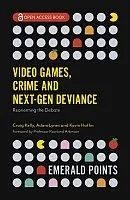By Thomas Christoff, Benjamin Carleton, Margarita Parker, Kaitlin Moloney, Alexa Blondin, and Bill Taylor
Traffic enforcement encounters represent one of the most common interactions that the public has with law enforcement, with more than 20 million people pulled over for a traffic stop in the US each year (Baumgartner et al., 2021). Police officers make at least three important decisions during a traffic stop encounter, including whether to initiate a traffic stop, whether to conduct a search of persons or the vehicle, and how the officer will sanction the driver (Schafer et al., 2006). Similarly, traffic enforcement is also one of the primary responsibilities of the Michigan State Police (MSP), with MSP having conducted 287,065 traffic stops in 2022.1 In January of 2021, MSP took proactive steps to begin a partnership with researchers from the School of Criminal Justice at Michigan State University (MSU) to understand whether racial/ethnic disparities exist in traffic stop behavior by MSP patrol members. As part of MSP’s partnership with MSU, MSU researchers examined data for MSP traffic stops conducted during the year 2020. Overall, MSU’s analysis found that “African-American drivers experienced significant disparities with respect to MSP traffic stops.” In addition, MSU’s analysis found that “Hispanic drivers were significantly more likely than White drivers to be searched or arrested after traffic stops.” MSU conducted a second round of traffic stop data analysis using MSP data for traffic stops conducted during 2021. In this second round, MSU added a Post-by-Post analysis, which revealed that “a small proportion of MSP posts accounted for the racial and ethnic disparities observed statewide.” The analysis also revealed disparities in traffic stops for African-American drivers in Secure Cities Partnership (SCP) locations. Upon receiving MSU’s initial findings, MSP leadership responded in January 2022 with the unveiling of a multifaceted Five-Point Plan intended to address racial disparities in traffic enforcement. The five points focused on understanding the contributors to disparities in traffic stops and exploring ways in which MSP could effectively reduce such disparities. The point most relevant to this assessment is the first one, which involves the hiring of an independent consulting firm to review MSP policies and make recommendations that will address racial disparities. MSP issued a request for proposals in March 2022 seeking an independent consulting firm to conduct this work, and the CNA Corporation (CNA) was awarded the contract to assess MSP traffic enforcement policies and program initiatives over the course of 18 months, starting in June 2022. CNA’s approach to this assessment focused on the full lifecycle of a trooper, including how MSP recruits and hires its troopers, instructs and trains its troopers, and supervises its troopers. We also considered organizational factors that are relevant to traffic enforcement and equitable policing. To assess MSP’s traffic enforcement policies and program initiatives, we used a variety of sources, including document review, targeted interviews, focus groups, ride-alongs, and quantitative data analysis. This report details the findings and recommendations of this focused assessment and consists of the following five main sections: 1. Methodology and Approach 2. Recruitment and Hiring Policies, Trainings, and Practices 3. Trooper Policies, Trainings, and Practices 4. Supervisor Policies, Trainings, and Practices 5. Organizational Processes and Initiatives
Arlington VA: CNA, 2023. 95p.
























